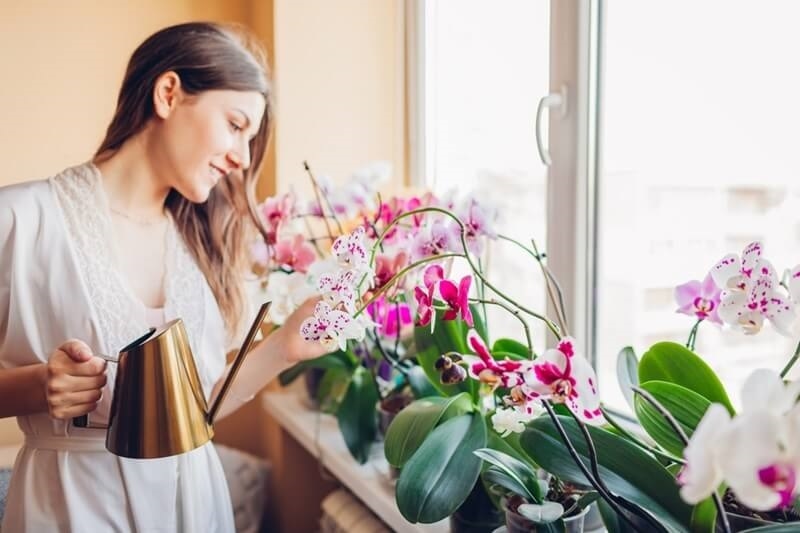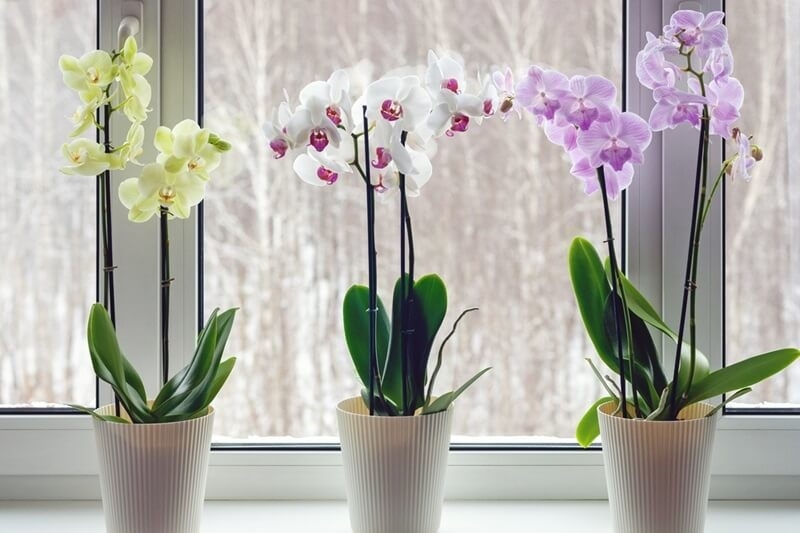
Orchids are one of the most beautiful and rewarding houseplants you can cultivate. Their exotic flowers bring a touch of elegance to any home, and their long-blooming varieties can light up your home for months. But if you're new to growing orchids, you may wonder whether orchids are hard to grow. In reality, with the proper techniques of growing orchids indoors, these stunners can bloom year by year and re-bloom season after season.
Here, we will discuss watering orchids in pots, orchid light requirements, orchid temperature, and orchid flower care. Whether you are a new plant parent or an experienced grower, this book is meant to guide you to an expert level in orchid growing in the USA.
Orchids are also said to be finicky and exotic, but most of all, the majority of them, particularly Phalaenopsis, or the "moth orchids," are lovely for apartments and homes in the USA. They thrive in indoor environments under proper care.
In contrast to most houseplants, orchids repay you by producing beautiful flowers that will last 8–12 weeks and, as such, are perfect for anyone who adores flowers. With learning how to cultivate orchids indoors, you will discover how to keep your orchid alive and blooming on a regular basis, year in and year out.
The key to effective indoor orchid gardening is an understanding of the way the plants exist in nature. The majority of orchids are epiphytes, and they exist on trees and not in soil. They draw water and nutrients from the air, the rain, and the decomposing plant material around them. That is why they need special care compared to your average houseplant.
To provide them with the same environment as nature, concentrate on four factors:
Let's discuss each of these in greater detail.
One of the most common errors new growers make is overwatering. Orchids do not have soil, and as such, they require their roots to be able to breathe in oxygen in order to survive. Too much water kills roots and leads to rot.
Some watering tips for orchids are:
Now that you have the pot watering know-how for orchids, you'll avoid root rot and create conditions for year-round flowering.

Light is quite possibly the most significant factor in orchid care at home. Orchids will produce leaves but never bloom again if they do not receive sufficient light. In contrast, direct sunlight burns fragile leaves.
The following are the things that you must know regarding the lighting needs of orchids:
Indications of adequate lighting are stiff green leaves and regular flowering patterns. When the leaves are dark green and flaccid, the orchid is not receiving enough light. When they are yellow or burnt, the light is too intense.
Orchids are tropical and therefore like consistent, warm temperatures. But most types actually require some drop in temperature at night to induce flowering.
Important specifics for orchid temperature needs are:
By meeting orchid temperature needs, you’ll help your orchids stay healthy and stimulate new flower spikes.
After your orchid blooms, it's time to gear up for orchid bloom care. Your blooms will last weeks or months, depending on their care.
Key tips to successful orchid bloom care:
Treat orchid flowers well, so not only will existing flowers last longer, but the plant will be healthy enough to flower again sometime in the future.
Orchids need to respond to changing seasons if they're blooming in the USA, and part of their response is to seasonality. Orchid maintenance in the USA is a large part of paying attention to seasons.
By tailoring your approach, you’ll be well-prepared for the unique challenges of caring for orchids in the USA.
Even veteran growers mess up the treatment of orchids indoors. These are some precautions to take into account:
Steering clear of these faux pas will simplify and make it more enjoyable to grow orchids in the USA.
Maybe the most common question a plant parent asks is: How do I get my orchid to rebloom?
The trick is maintaining balance in orchid temperature requirements, lighting, and good orchid bloom care. When flowers are droopy:
If you get your timing right, you'll have a new batch of flowers next year.
Orchids can be intimidating, but once you know, they're no more difficult to cultivate than other household plants. From watering orchids in containers properly to learning orchid light requirements, orchid temperature requirements, and caring for an orchid flower, you're one step closer to success with each step.
This content was created by AI